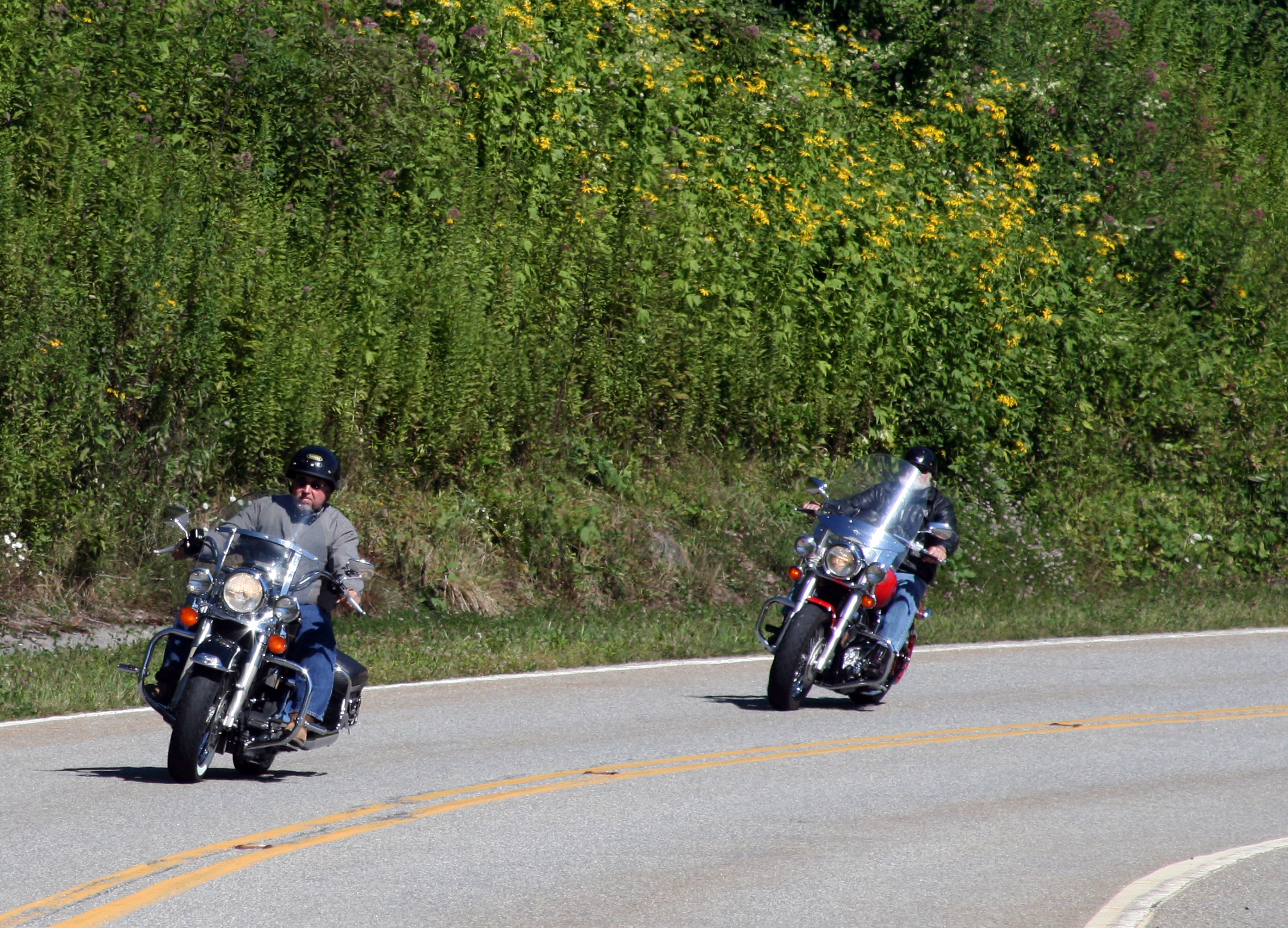Survey results show NC motorcycle riders focus on safety

The image of the devil-may-care motorcycle rider is long entrenched in American pop culture. But the results of a 2016 survey of registered N.C. motorcyclists paint a far different picture of real-life riders who care about safety and take steps to ensure their safety when they ride.
HSRC researchers conducted the 2016 survey on behalf of the North Carolina Governor’s Highway Safety Program to gauge how important safety issues in the N.C. motorcycle riding community have changed in the years since a similar HSRC survey was conducted in 2004. To conduct the survey, GHSP obtained a list of registered motorcycles in the state as of January 2016. A sample of 4,000 owners of these motorcycles were sent letters requesting they complete an online questionnaire. (848 motorcycle owners completed the survey.)
Survey questions asked about riders’ experiences with and thoughts about rider safety courses, as well as current and potential safety laws. Questions about rider characteristics, riding experience and crash history were also included. The results show a N.C. rider community that is concerned about safety:
- By a margin of two to one (63 percent vs. 31 percent, with five percent undecided), respondents said they favor the N.C. law requiring all riders to wear a helmet.
- Most riders (62 percent) reported always wearing a helmet when riding in states that don’t require helmet use.
- Riders also reported wearing safety equipment in addition to helmets. The chart shows the percent of riders who reported wearing several types of protective clothing.

- A leading cause of motorcycle crashes is the difficulty other drivers have in seeing motorcyclists. Survey respondents are broadly aware of this and nearly four in ten (38 percent) reported that they wear something — such as bright-colored clothing, bright-colored reflective vests or clothing with reflective materials — to increase visibility to other road users.
- Most (85 percent) respondents said it is important for a beginning motorcycle rider to take a rider safety course, and 53 percent had taken at least one rider safety course.
- 56 percent of survey respondents said they favor a zero blood alcohol content limit for motorcyclists during their first year of riding. Fewer riders (37 percent, with 16 percent undecided) also support a lower alcohol limit for motorcyclists than for automobile drivers, in view of the fact that riding a motorcycle requires more physical skill than driving a four-wheel vehicle.
Despite having some views in common, the motorcycling community is not a homogenous group. The brand of motorcycle owned tends to correspond with the owners’ views and actions regarding a range of issues including safety. In particular, Harley-Davidson riders—the largest single group, but nonetheless a minority (39 percent) of all motorcyclists—are less safety oriented. They report less frequent use of helmets and other safety clothing and are less supportive of safety regulations.
Fifty years ago, motorcycling was a young person’s sport, but that is no longer the case; the motorcycling community is far older and more experienced than is commonly believed. Survey respondents ranged in age from 20 to 96, with an average age of 55. Most of them have been riding since they were young, with an average of 28 years riding experience. A little more than half of riders reported having a crash or fall at some point in their riding history, and 23 percent reported having had more than one crash or fall.
The 2016 N.C. motorcycle rider survey is one of several efforts led by HSRC researchers Bevan Kirley, Arthur Goodwin and Robert Foss to advance scientific understanding of motorcycle safety. They are currently finalizing a book-length review of the research literature on motorcycle safety to be published by the National Highway Traffic Safety Administration. They are also examining the effectiveness of a N.C. training program for experienced riders called BikeSafe. The program is unique in that riders are paired with police motorcycle officers who observe them during lengthy rides, then provide feedback and offer guidance on how they can improve their riding techniques to enhance safety.
The HSRC motorcycle research group is also working to improve methods for measuring the amount of motorcycle riding that takes place in states. An adequate measure of motorcyclists’ exposure to crashing is critical to understanding which conditions and riding behaviors are most risky. The value of exposure data was clearly demonstrated in a recent HSRC study of motorcyclist crashes in the mountains of western North Carolina, where several common-sense explanations of the high crash rate were debunked.
Directions is a free, online publication of the University of North Carolina Highway Safety Research Center. No permission is needed to reprint from articles, but attribution is requested. Sign up to receive Directions here.
Executive Editor: Caroline Mozingo
Managing Editor: Jennifer
Palcher-Silliman
Graphic Designer: Graham Russell
